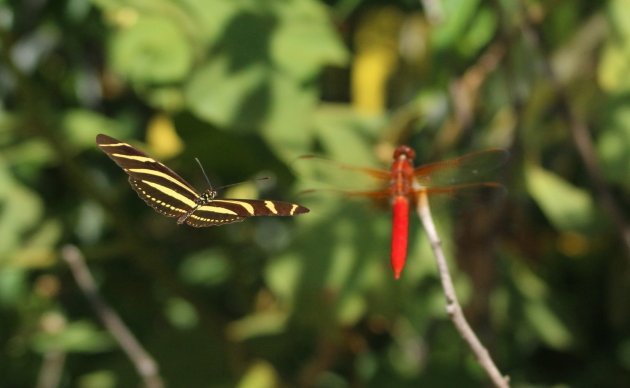
As I mentioned a couple of weeks ago, birding in Michoacán has required that I find most of my own hotspots. As distancing has become more and more important in recent weeks, I have visited the loneliest of these, one by one. But last week, I decided to go exploring once again, in search of new places where I can bird alone.
The previous week I had birded along a mountain path called the camino al Ejido Triquillo. I found this route, which winds through pine-oak forest, as a substitute for my beloved site of Pino Real, which is just over the ridge but is now badly degraded. The first part of this trail, although it takes you into dense pine forest, overlooks a visually spectacular and precipitous drop into Mexico’s Tierra Caliente, the Hot Country. And the border, or ecotone, between these two ecological regions can make for some very interesting birding. So now, down this same hill I went.
The road that leads to the above trailhead continues on to a small town called La Escalera (the stairway), and alternates between pine-oak forest and tropical thorn forest, from the trailhead all the way to that town. In the end, I spent most of my time along a very smooth but unpaved side road, to an even smaller town called Arúmbaro.
If I had only been able to see birds, and not plants, I still would have been aware of this constant alternation between these two forest systems. One moment I am seeing pine-dependent Grace’s Warblers and oak-dependent Acorn Woodpeckers, and the next I see the Hot Country endemic Golden-cheeked Woodpecker. Ladder-backed Woodpeckers move freely between the two habitat zones.

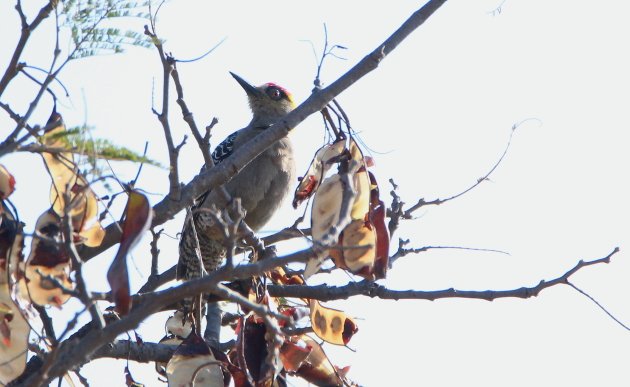
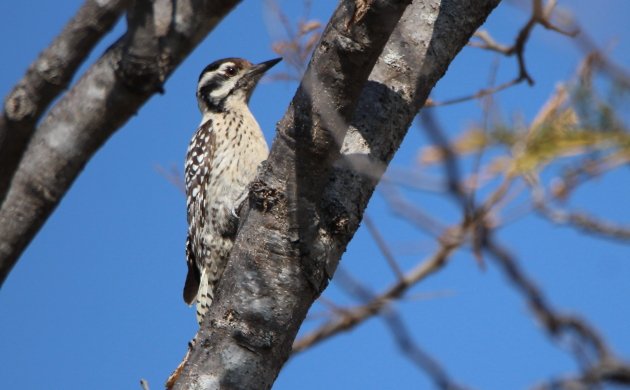
Most of the ground-feeding seed-eaters fit solidly within the Hot Country species, with really large numbers of Stripe-headed Sparrows and Blue-black Grassquits.
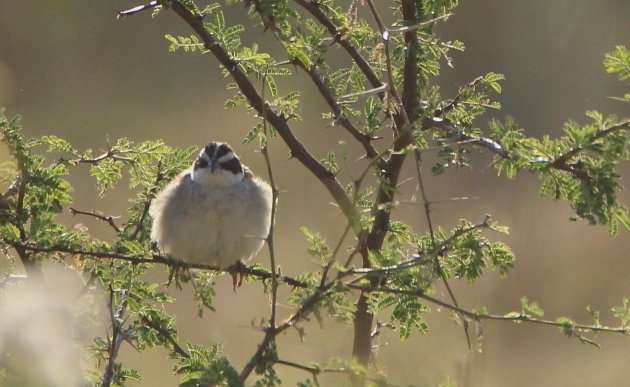 A Stripe-headed Floof… I mean, Sparrow
A Stripe-headed Floof… I mean, Sparrow
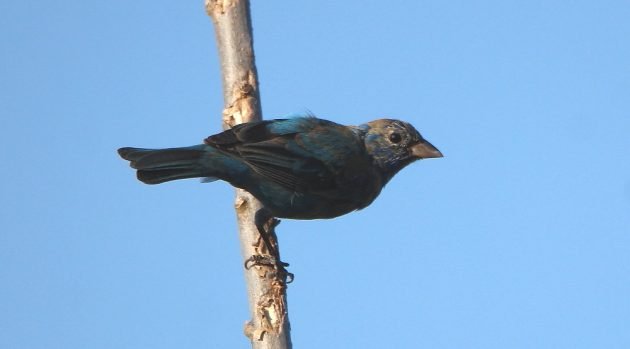 This Grassquit is in full molt.
This Grassquit is in full molt.
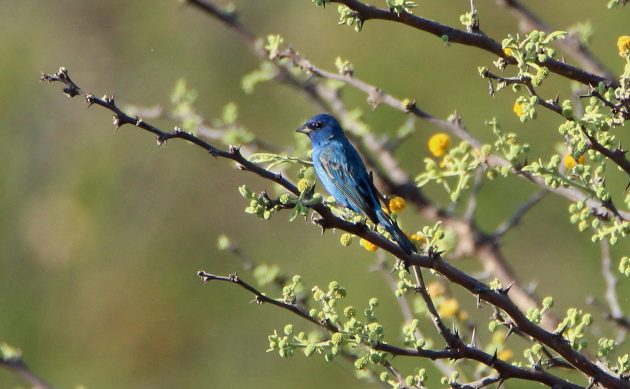 While this Grassquit has finished.
While this Grassquit has finished.
In the same way, the only Kingbird present clearly reflected the thorn forest biome, for it was a Thick-billed Kingbird. But a little bit further, along a small stream, was an Orange-billed Nightingale-Thrush, typical of higher, cooler forests. The Butterfly and Dragonfly shown at the top also came from above the same stream. (I was taking photos of that bright orange dragonfly, when the Zebra Butterfly photobombed me.)
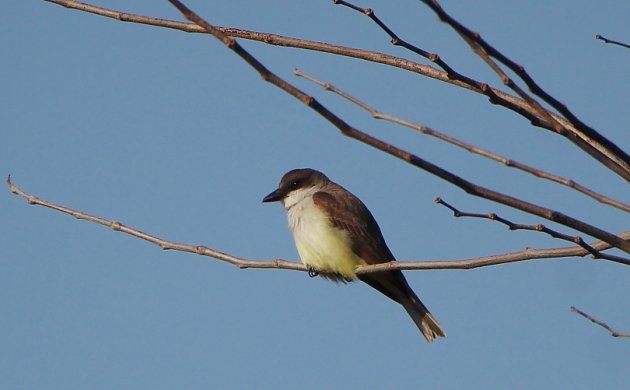
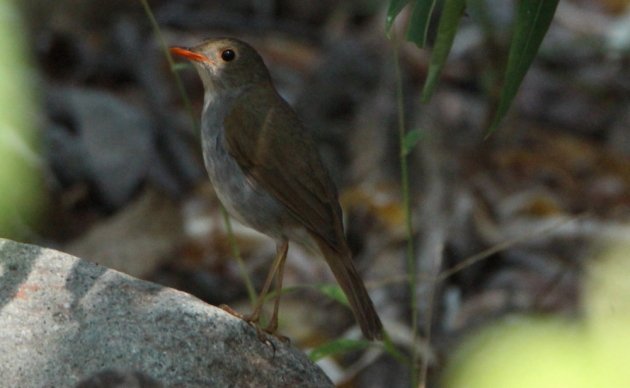
The find of the day came with a backstory. Five years ago, I made my first birding foray into Michoacán’s Hot Country. I had not yet discovered the sites that can be reached from Morelia’s eastern exit (near which I live), so I drove twice as far to the southwest. Unfortunately, on that trip I tried to jump over a small stream and failed. Since I went down face first, and my optics were hanging from my neck, they got significantly wetter than I did, which effectively ended that first try at Hot Country birding. The only birds big enough for me to ID with the naked eye on the way back up the hill were one large Red-tailed Hawk, an unmistakeable Russet-crowned Motmot, and a lifer Lesser Roadrunner. No photos, of course… and no second chance for years, until last week!
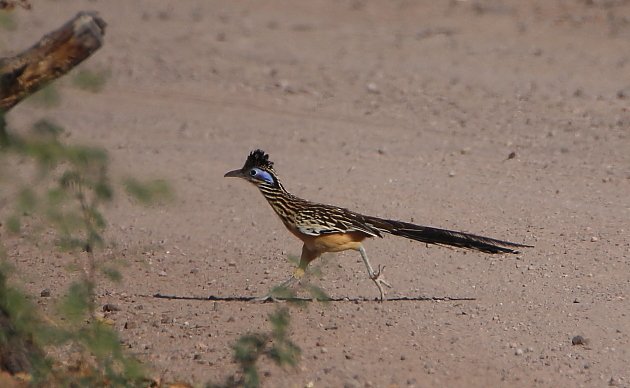 The Lesser Roadrunner… running on the road, of course.
The Lesser Roadrunner… running on the road, of course.
The Lesser Roadrunner, by the way, is not the species you can see in the American Southwest. It only occurs in tropical Mexico and Central America, and has a smaller bill and overall size, and a richer buff color on the breast and belly. It is an altogether handsome bird, and I am so glad that this time I got good photos… even an action shot!
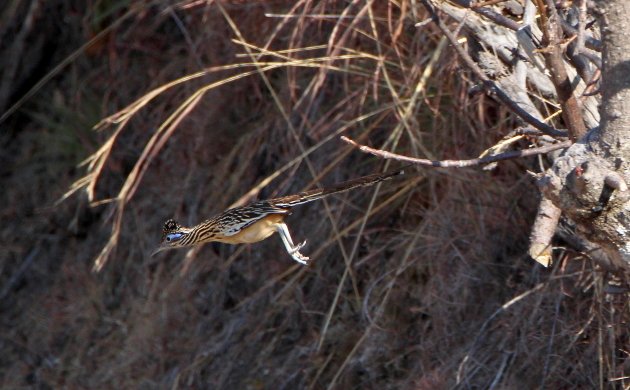 On its way to the above road
On its way to the above road
Have any of you good people found new places to bird alone, in these unsettled days?













nice photos. Keep at it!